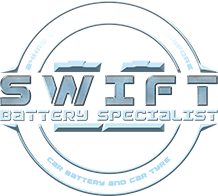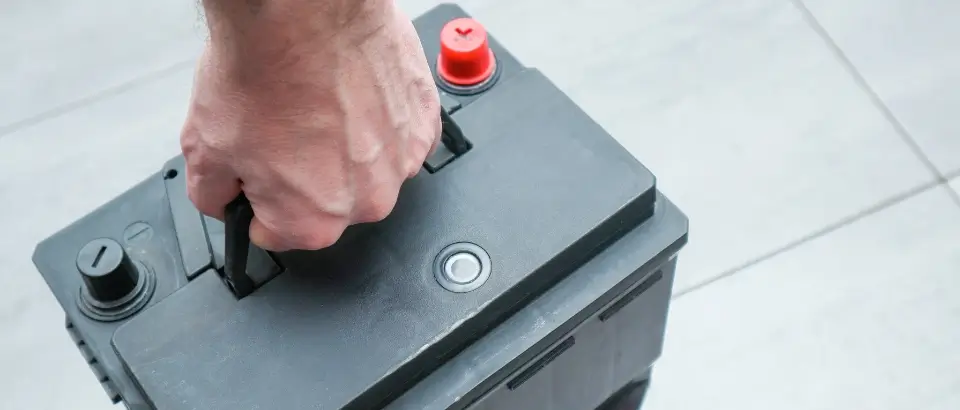Dry Battery vs. Wet Battery -What’s Better for My Car?
When it comes to selecting the best power source for different applications, people are often caught in the eternal dilemma of whether to use dry-cell or wet-cell batteries. This controversy has been crucial as well as an eternal one. You can choose the finest battery to suffice your needs by being aware of the main distinctions between dry and wet batteries as well as their benefits and applications. Let’s examine the nuances of wet-cell and dry-cell batteries to identify their benefits and applications, and what they are:
What is a Dry Cell Battery?
A dry cell is a primary battery type that is made up of an anode, cathode, and electrolyte paste, among other essential parts.
- The negative electrode, or anode: When the battery discharges, oxidation (loss of electrons) takes place at the anode, which is usually composed of zinc.
- Positive Electrode, or Cathode: During discharge, reduction (an increase in electrons) takes place at the cathode, which is typically made of carbon or graphite combined with manganese dioxide.
- The electrolyte: Rather than using a liquid electrolyte, dry cell batteries employ a paste. This paste, which acts as a conduit for ion transfer between the anode and cathode, is often a blend of zinc chloride and ammonium chloride.
- Separator: Between the anode and cathode, a separator—typically composed of paper or a comparable substance—is positioned to let ions flow through while preventing direct contact and short circuiting.
- Container: The entire assembly is enclosed in a sealed steel or zinc container. This container serves as the cathode terminal for electrical connections and shields the interior components.
What Are the Advantages of a Dry Battery?
- Portability: Due to their small size and low weight, dry cell batteries are ideal for a wide range of electronic equipment, such as portable radios, flashlights, and toys.
- No Leakage: Dry cell batteries use immobilised electrolyte paste, which lowers the possibility of leakage and makes them safer to handle than wet cell batteries, which contain liquid electrolytes that may spill if the battery is damaged.
- Durability: Because of their sealed structure, which shields the internal components from corrosion and damage, dry cell batteries are typically more resilient than wet cell batteries.
- Long Shelf Life: Dry cell batteries hold their charge for lengthy periods of time when not in use, giving them a comparatively long shelf life. Because of their portability and extended lifespan, dry cell batteries are perfect for emergency backup power or for gadgets that aren’t used often.
What Are the Applications of Dry Cells?
Dry cell batteries are utilised in many electronic products, such as flashlights, remote controls, and portable electronics, because of their mobility, dependability, and ease. Typical uses of wet batteries, include the following:
- Fashlights
- Controls with remote
- Electronics That Are Portable
- Watches and Clocks
- Smoke detectors
- Calculators
- Emergency Lighting
- Portable Tools
What is a Wet Cell Battery?
Every wet cell battery features a liquid electrolyte solution. That’s the reason; these batteries are also called flooded cell batteries. These batteries promote ion flow between the anode and cathode. The structure of a quality wet-cell battery contains:
Negative Electrode (Anode): The anode or a negative electrode of a wet cell battery is generally composed of lead (Pb). Lead oxidises and releases electrons during discharge.
The positive electrode, or cathode: The cathode or the positive electrode of a wet cell battery consists of Lead dioxide (PbO₂). During the discharge, lead dioxide goes through reduction at the cathode, where it acquires electrons.
Solution of Electrolytes: Wet cell batteries feature a liquid solution in contrast to the dry cell batteries, which employ a paste electrolyte. This solution, which facilitates ion movement between the anode and cathode, is typically a combination of sulphuric acid (H₂SO₄) and water (H₂O).
Separator: Wet cell batteries, like dry cell batteries, require a separator to keep the anode and cathode from coming into direct contact. This separator, which is frequently composed of porous materials like plastic or rubber, permits ions to flow through while blocking short circuits.
Container: The complete system is kept in a sturdy rubber or plastic container. This container supports the battery structurally and contains the electrolyte solution.
What Are the Advantages of Using Wet Battery?
These batteries come with the following advantages:
High Capacity: Compared to dry cell batteries, wet cell batteries usually have a higher energy density and capacity. Dry cell batteries are appropriate for use in backup power systems and automobiles due to their capacity to deliver consistent, long-term power.
Low Cost: In general, wet cell batteries are less expensive than dry ones. Lead and sulphuric acid, two components used in wet cell batteries, are easily accessible and reasonably priced.
Easy Maintenance: Maintaining wet cell batteries is not that difficult. To restore electrolyte levels and prolong the life of dry cell batteries, users can top them out with distilled water. Because of this feature, dry cell batteries can be used in automobiles where routine maintenance is practical.
High Discharge Rate: Because wet cell batteries have a rapid discharge rate, they can be used for tasks that call for quick power spikes, such as starting a car’s engine or running large machinery.
What Are the Applications of Wet Battery?
- Automotive Industry
- Marine Applications
- Telecommunications
- Renewable Energy Systems
- Emergency Backup Power
- Industrial Equipment
- Electric Vehicles
- Standby Power Systems
Which One to Choose For Your Car – Dry or Wet Battery
For the majority of common cars without complicated starting/stopping systems or high use needs, wet-cell is a good, affordable solution. That’s because, wet cells are affordable, they are widely available, and they come with tried, tested and proven technology.
Dry-Cell (AGM, Gel): Dry-cell batteries are an excellent alternative if you’re looking for a safer and low-maintenance solution, particularly for cars with stop/start systems or those utilised in harsh environments.
EFB: You must select between using AGM or EFB batteries if your vehicle has an engine auto start-stop feature.
Lithium-ion: Take into account them for EVs or hybrid vehicles, as well as for vehicles that come with high power requirements or when weight is a major consideration.
So taking all these into account, wet batteries are the most feasible option for your car. All you need to do is get the best battery for your car for the best and most prolonged outcome.
We understand the importance of finding the perfect power source for your vehicle. Whether you prefer the durability of a dry battery or the affordability of a wet battery, our team is here to help you make the right decision. Contact Swift Battery Specialist today for expert advice and top-quality battery solutions tailored to your car’s needs.











